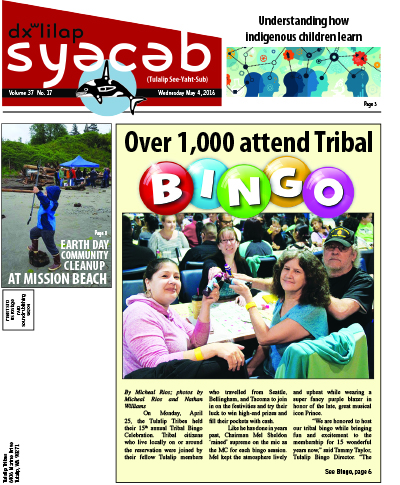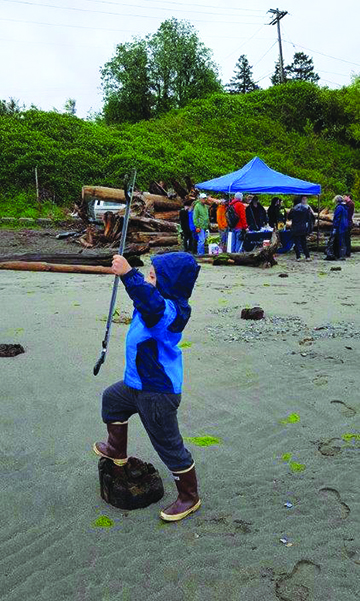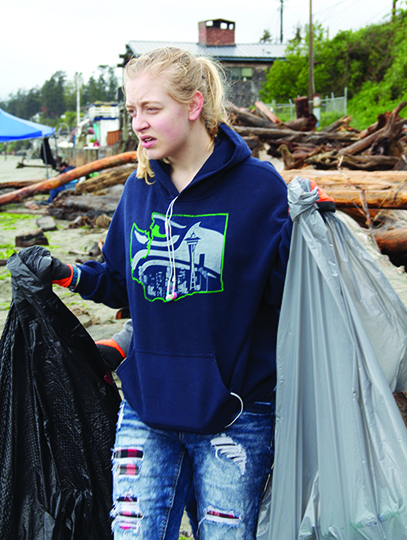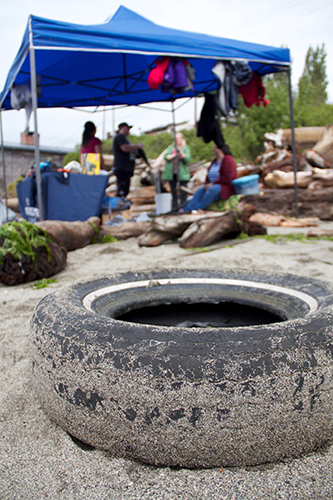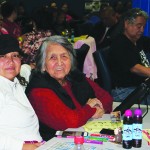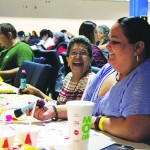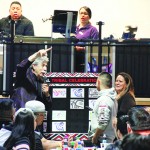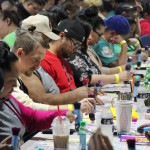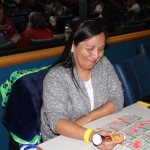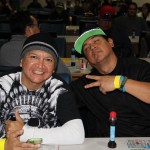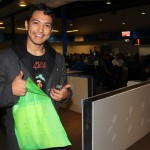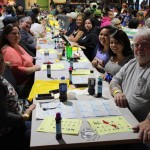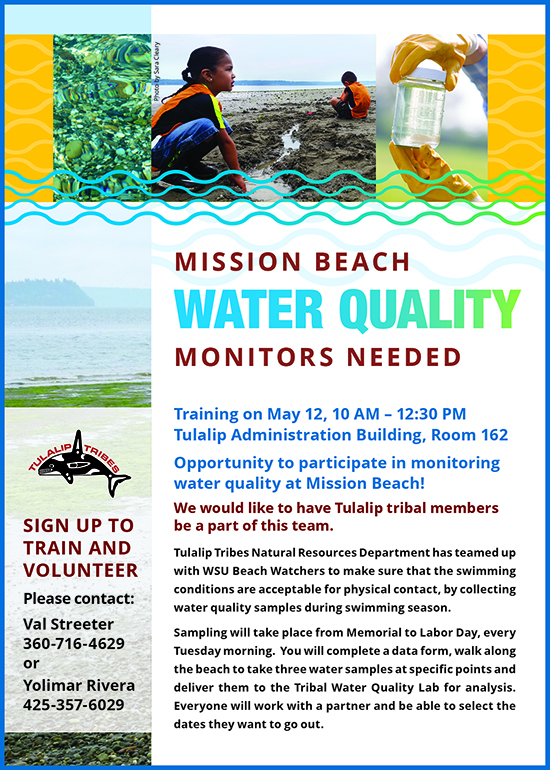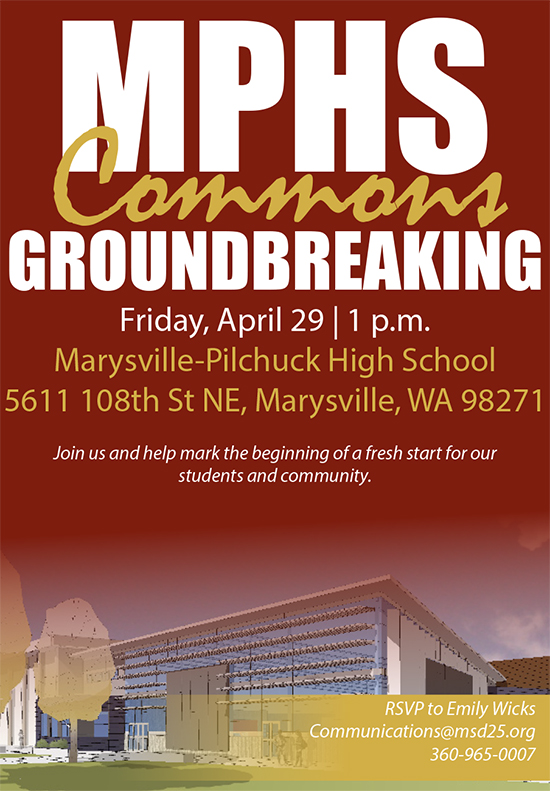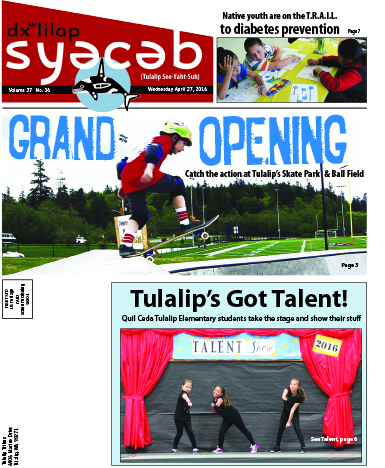March 1, 1961- April 24, 2016 Matthew J. Humphreys of Tulalip, Washington passed away on April 24, 2016. Services will be held on April 29, 2016, at 10 a.m. at the Tulalip Tribal Gym with burial to follow at Mission Beach Cemetery.
Month: April 2016
May 4, 2016 syəcəb
Understanding and legitimizing how indigenous children learn
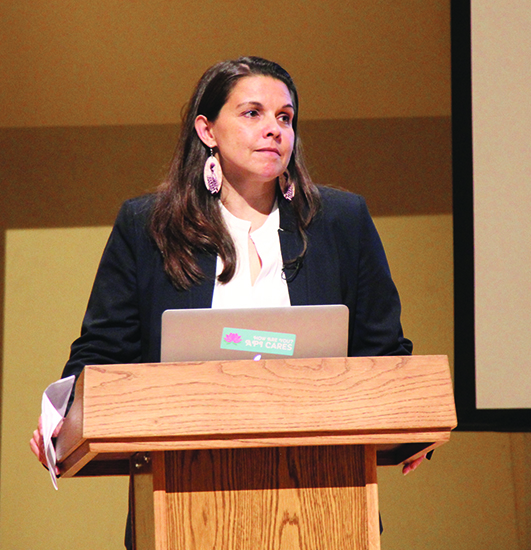
Photo/Micheal Rios
Article/photo by Micheal Rios, Tulalip News
The way we learn is shaped by our culture. For indigenous children, there is often a mismatch between their culture and the classroom. This has been a long held belief in the Native community. For Tulalip tribal member and associate professor Stephanie Fryberg, Ph.D., she had the unique access to resources and methodology necessary to examine how indigenous children’s approach to learning and how the teaching model of their educators can coalesce to create a more supportive academic environment. Dr. Fryberg shared her findings during a lecture held at the University of Washington on Wednesday, April 20.
Dr. Fryberg’s lecture was part of the Connecting the Dots Between Research and Community series, where a UW Psychology professor partners with a visiting colleague to tell the story of how their research is addressing some of society’s biggest challenges. Presented by the UW Department of Psychology and the UWAA, this event was free and open to the public. In attendance to support their fellow Tulalip tribal member were Senator John McCoy, General Manager Misty Napeahi, and Board of Director Glen Gobin.
Dr. Fryberg’s lecture was titled Using Cultural Models to Build on the Strengths of Native Students. The description is as follows: Individuals are a product of the culture they inhabit, and also play an important role in creating and adapting to that culture. For many indigenous students, the culture of educational institutions in the U.S. reflects a set of ideas and practices about what it means to be a “good” student, the purpose of education and the nature of the relationship between teachers and students. This results in a cultural mismatch between indigenous students’ model of self and the model prevalent in mainstream educational contexts.
A central theme to the lecture was an examination of the “struggling Native student” narrative. We’ve all heard about this narrative and probably seen the statistics that are often used to defend it. Taking it up another notch, we’ve also heard that even when Native students do manage to graduate high school, they are not adequately prepared to achieve success in higher education. Dr. Fryberg attributes this narrative to being one of a cultural context and to alleviate the narrative we must reframe the idea altogether.
“We are going to reframe this idea of the struggling Native student by looking at it through a bigger picture, which we in my field refer to as the cultural cycle,” stated Dr. Fryberg. “The culture cycle reminds us that to truly alleviate the achievement gap we have to start by looking at every piece of the culture cycle. So when we think about a child in a classroom, it isn’t just about the child and the teacher, it’s about so much more. It’s about the ideas that stand behind why children go to school, it’s the ideas that lead to the development of the school, or that set the stage for what we see as the ‘good’ or ‘right’ way to be a student.
“Within that we setup institutions. We have schools and we have the media, but we also have classrooms and we have micro-cultures within classrooms, in which teachers play a role. So we get to this level of the interaction that’s between the student and the teacher, but sometimes what our field has shown is that interaction is not just between us in relationship, it’s between us and representational space. It is the idea the teacher has about me, as a student, that allows that space between us to shape the interaction and ultimately, for young children, to shape their development and the outcomes that we see.”
Within the cultural cycle it is critical to be aware of two distinct cultural models of self, the independent model and the interdependent model, that play major roles in how the shaping of interactions between student and teacher effect student development and achievement outcomes.
The independent model of self is based on an understanding of self as independent from others and the social context. “Good” actions promote separation from others and individual self-expression. The independent model of self is best seen in the U.S. mainstream, where context is driven by a set of cultural norms, values and beliefs that center the individual as independent and separate from others. It is a unique cultural model that most of the world does not engage in.
In many parts of the world that notion to separate yourself from others is not only unheard of, but would be seen as unhealthy. A much more common model is the interdependent model of self that is based on an understanding of self as interdependent with others and the social context. “Good” actions promote connection to others and attention to others’ preferences. Most people and cultures in the world, specifically outside of the U.S., engage in this more interdependent model. It’s important to recognize that Native culture is inherently within the interdependent model, but because we are within the U.S. our actions, values, and norms are constantly scrutinized by the mainstream independent model.
Now, you may be wondering how all these concepts and social psychology terms tie-in with Native students, their teachers and academic success. It does all come together.
By recognizing Native students’ engagement in the interdependent model of self, but that in large part their teachers and schools adhere to the independent model of self, we can then understand how the prevailing education system is not setup for Native student to succeed. However, there are courses of action to change this, which Dr. Fryberg and her team demonstrated at Quil Ceda Tulalip Elementary from 2011-2014.
Using the culture cycle to enhance academic performance by Native students alleviates the “struggling Native student” narrative by requiring culturally-grounded interventions that focus on all levels of the cultural cycle. This work is achieved by building schools that reflect and foster a diversity of viable ways of being; creating an immersion environment (e.g., morning welcome assembly, growth mindset, purposefully placing posters/images on walls); creating “matches” by helping Native students build identities that maximize potential while also providing them with a culturally-safe educational atmosphere; and by valuing old identities and scaffolding new identities.
In the study done at Quil Ceda Tulalip Elementary from 2011-2014 by Dr. Fryberg and her team, with the inclusion of the previously listed methods and intervention, the results were staggeringly in favor of increased Native student achievement. Kindergarten and 1st graders led the district in oral reading fluency; 95% of Kindergarten and 80% of 1st graders were proficient or above benchmark in reading. Using measures of academic progress in literacy and math for grades 3-5, 60% made more than one year’s growth and at least half of these students made 1.5 to 2 years growth. Best of all, the school met state annual measurable objectives in every category.
It’s important to note that having teachers who are aware of their own biases towards the independent model of self and willing to retrain and reframe their teaching methods to suit their Native students is central to overall success as well. It’s a cycle of understanding and legitimizing the learning and cultural model of Native children that leads to them making greater strides in academic development and achievement. When this occurs not only do the expected outcomes of the students and their teacher benefit greatly, but the entire community as well.
Contact Micheal Rios, mrios@tulaliptribes-nsn.gov
Environmental warriors team up for Tulalip Mission Beach project
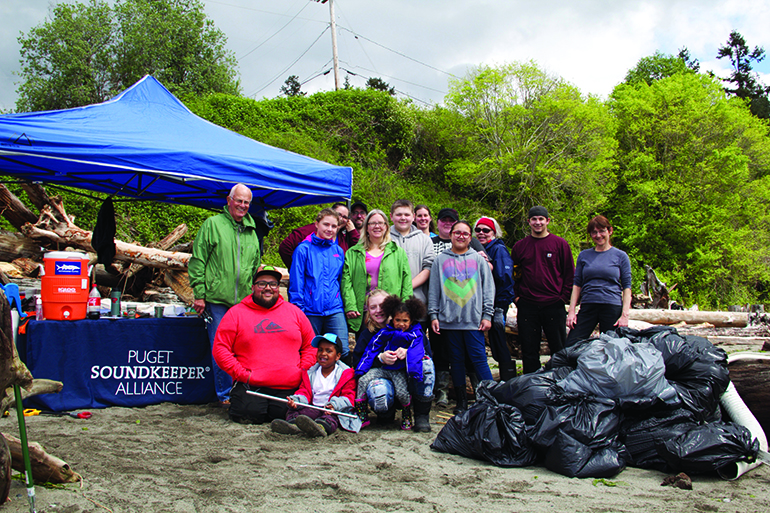
By Kim Kalliber, Tulalip News
The world is beginning to see the physical effects of climate change in the shape of melting ice glaciers, rising sea levels, declines in animal species and changes in weather. Humans, while causing this change, can also be the cure. Through trimming our waste, recycling, and being more energy efficient, we can reduce our carbon footprint.
The folks at Puget Soundkeeper, an environmental group that works to protect and preserve the Puget Sound, teamed up with the Tulalip Tribes and Sno-King Marine Mammal Response, who promote respect of the marine environment, to host a community cleanup at Mission Beach in celebration of Earth Day.
The focus of the April 23 Mission Beach cleanup was to clear debris found along the shore and remove a noxious weed called Scotch broom.
“Each plant can dump thousands of seeds on the ground and they remain viable for 30 years or more. It grows fast and crowds out other native plants,” explained Julia Gold, Tulalip Tribes Natural Resources. “Over the last 3 years since the homes were removed from the beach, tidal action has formed a small dune on the upper beach and native willows, rushes and dune grasses are establishing themselves. But Scotch broom seeds are arriving quickly and have formed 10-foot high thickets in three short years. So for the Tulalip Natural Resources Department, removal of the Scotch broom is a high priority. The dune environment is a very important food source for young salmon coming from the Snohomish River. They look for cover in the nearby eelgrass beds and feed near the shore during high tide.”
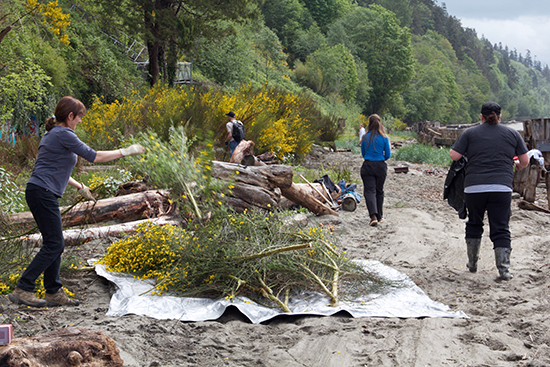
Puget Soundkeeper were looking for a beach clean project, and since the Tribe hosts one or more Earth Day events each year, they chose Mission Beach out of a dozen potential project sites.
Andy Gregory, Pollution Prevention Director for Puget Soundkeeper, explained the devastating affects marine debris has on the world’s oceans and how it impacts habitat and wildlife in critical and sensitive water bodies such as the Snohomish estuary adjacent to Mission Beach.
“Just below the low-tide line at the beach is critical Eel Grass habitat used by forage fish and juvenile salmon,” said Gregory. “Marine debris, and especially micro-plastics, can contaminate this habitat and enter the food chain where they become toxic to fish and the humans or marine mammals that consume them.”
Tulalip tribal members and community members, along with the two environmental groups, worked together to create change, to help the environment and protect its wildlife for us, for Mother Earth, and for our future generations.
“With the help of over 20 volunteers we removed 353 pounds of debris and a pile of Scotch broom that was bigger than my VW bus!” exclaimed Gregory.
“This work is both challenging and rewarding, while it can be frustrating to see trash carelessly left on the beach or shoreline, it is very satisfying to see such a group of enthusiastic volunteers happy to do their part to clean up. When we showed up in the morning, it was cold and stormy with a strong wind and intermittent rain. As we began to work, the clouds cleared and the sun came out. One of the girls from the tribe said, ‘The sun came out because our ancestors are happy with the good work we’re doing.’ I am humbled to be part of this important work.”
Over 1,000 attended Tribal B-I-N-G-O
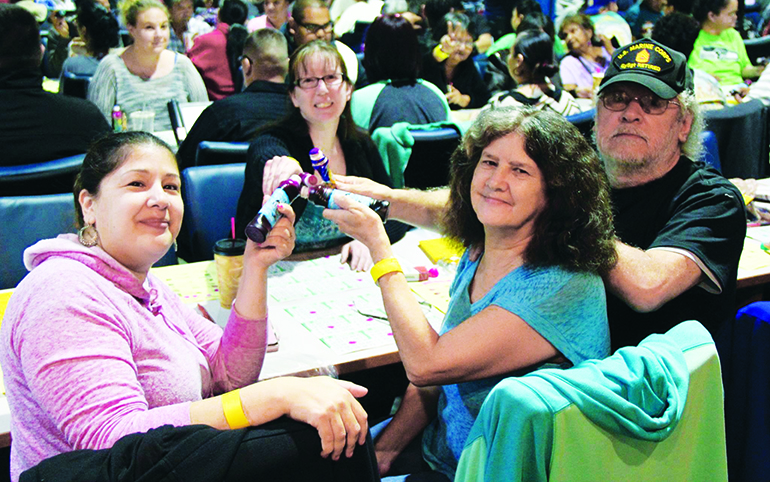
By Micheal Rios, Tulalip News
On Monday, April 25, the Tulalip Tribes held their 15th annual Tribal Bingo Celebration. Tribal citizens who live locally on or around the reservation were joined by their fellow Tulalip members who travelled from Seattle, Bellingham, and Tacoma to join in on the festivities and try their luck to win high-end prizes and fill their pockets with cash.
Like he has done in years past, Chairman Mel Sheldon ‘rained’ supreme on the mic as the MC for each bingo session. Mel kept the atmosphere lively and upbeat while wearing a super fancy purple blazer in honor of the late, great musical icon Prince.
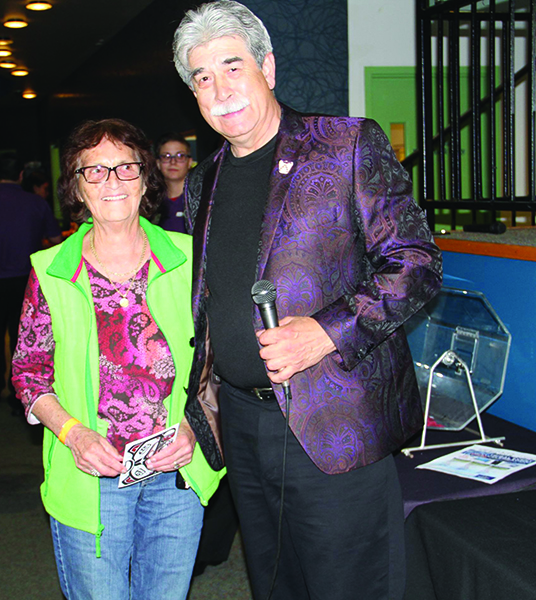
“We are honored to host our tribal bingo while bringing fun and excitement to the membership for 15 wonderful years now,” said Tammy Taylor, Tulalip Bingo Director. “The beautiful part of our tribal celebration is it’s a fun time for our people to enjoy each other’s company. During any one of the three sessions you could feel the happiness, feel the positive spirits, and see the beautiful smiles of our elders. Every year it’s so wonderful to see our elders come in and have such a great time.”
This year’s event was heralded as unique from previous years, as Bingo staff did their best to make the 15th annual celebration one to remember. First of all, instead of having only two sessions like years past, there were three sessions; held at 10:00 a.m., 2:00 p.m., and 6:00 p.m. Adding an extra session made seating more comfortable and gave a slight bump to everyone’s chance of winning prizes and cash. Secondly, the door prize drawings were held in a different fashion. Tribal members who were lucky enough to have their ID called would make their way to the front and choose from a number of tribally designed cards (provided by our very own Hibulb Cultural Center), and then on the back of the card would be their door prize. Prizes ranged from a trip voucher to a Vizio 60” flat screen TV to a washer and dryer set to various amounts of everyone’s favorite, cold hard cash.
Spanning each session were 14 games of bingo, plus an all-new Wild Goose Chase pull-tab game. For each session there was just under $17,100 in total cash prizes awarded to the winners.
The 10:00 a.m. morning session was most popular with 420 tribal members in attendance, followed by the 6:00 p.m. evening session with 394, and lastly the 2:00 p.m. session had 277. All in all there were 1,091 Tulalip tribal members who took part in this year’s bingo celebration.
“Our Bingo team did a wonderful job of preparing for each session and executing as a team,” added Tammy. “There were virtually no lines, whether it was getting the membership in the door and finding a seat or getting a plate of food. Our Deli team cooked and prepared more than enough food for the breakfast, lunch and light dinner we provided. From our Bingo team members to the Enrollment team members, everyone did a fantastic job start to finish.”
Mission Beach Water Quality Monitors Needed
Quit Smoking, Fight Cravings With Help From Tulalip’s Health Clinic
M-PHS Commons Groundbreaking, April 29
Please join Marysville School District staff, teachers, students, and families for a groundbreaking ceremony marking the beginning of a fresh start for our students and community.
M-PHS Commons Groundbreaking
Friday, April 29, 2016 at 1 p.m.
Marysville-Pilchuck High School
5611 108th St NE, Marysville, WA 98271
Event will be located between gym and stadium
*Parking is available in front of gym and pool
April 27, 2016 syəcəb
Please use the following link to download the April 27, 2016 issue of the syəcəb:
April 27, 2016 syəcəb

